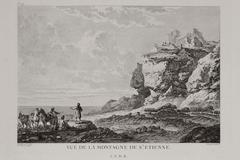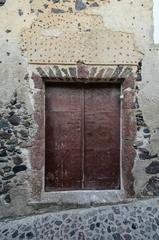Akrotiri Thira Municipality, Greece: Visiting Hours, Tickets, and Historical Sites Guide
Date: 14/06/2025
Introduction
Nestled on the mesmerizing island of Santorini, the Akrotiri Archaeological Site is an unparalleled window into the ancient Aegean world. Referred to as the “Minoan Pompeii,” Akrotiri preserves the sophistication of a Bronze Age civilization, frozen in time beneath volcanic ash after the catastrophic eruption of Thera in the 17th century BCE. Remarkably, this ash protected multi-story buildings, vibrant frescoes, advanced drainage systems, and countless artifacts, allowing modern visitors to walk through a prehistoric cityscape and glimpse the complexities of ancient urban life.
Akrotiri’s strategic maritime location fostered trade across the Eastern Mediterranean, linking the settlement with Crete, Cyprus, Egypt, and beyond. Today, the site stands not only as an archaeological marvel but also as a must-visit destination for travelers eager to explore Greece’s rich heritage. This guide compiles essential information about Akrotiri visiting hours, tickets, accessibility, travel tips, and nearby attractions, equipping you to make the most of your Santorini adventure. For official updates, consult resources such as the Akrotiri Museum and Santorini View.
Embark on a journey through Akrotiri, where the echoes of ancient civilization still resonate beneath the sun-drenched landscapes of Santorini. (Santorini View; Akrotiri Museum; Greece Travel Secrets)
Table of Contents
- Historical Overview of Akrotiri
- Archaeological Significance
- How to Visit Akrotiri: Tickets, Visiting Hours, Accessibility
- Site Facilities and Accessibility
- Things to See at Akrotiri
- Nearby Attractions in Santorini
- Practical Visitor Tips
- FAQ
- Accommodation and Food
- Museums and Exhibitions
- Outdoor Activities and Excursions
- Visuals and Media
- Plan Your Visit and Stay Connected
Historical Overview of Akrotiri
Early Settlement and Growth
Akrotiri’s roots trace back to the late Neolithic period (c. 4500–4000 BCE), where it began as a modest fishing and farming village. Over the millennia, it flourished into a vibrant urban center, especially during the Bronze Age (c. 3000–1600 BCE). Its location in southern Santorini made it a hub for commerce and maritime trade with Minoan Crete, Cyprus, Egypt, and the wider Aegean. By the 17th century BCE, Akrotiri covered approximately 20 hectares, featuring multi-story buildings, paved streets, advanced sanitation systems, and a cosmopolitan populace skilled in crafts and metallurgy (Santorini View; Akrotiri Museum; Take Me to Greece).
Minoan Influence and Cultural Flourishing
Akrotiri’s prosperity was deeply intertwined with the Minoan civilization of Crete. Architectural styles, elaborate frescoes, and artifacts uncovered at the site demonstrate strong cultural ties. Notably, the frescoes—depicting scenes of nature, daily life, and ritual—offer a vivid portrait of Akrotiri’s society and are among the finest examples of Aegean art (Akrotiri Museum; History Hit; Santorini View).
The Catastrophic Eruption and Preservation
Akrotiri’s golden age ended abruptly with the massive eruption of Thera (Santorini) around 1613–1627 BCE. The settlement was buried under meters of volcanic ash, which preserved buildings, frescoes, and everyday objects. Unlike Pompeii, no human remains have been found, suggesting residents had time to evacuate after warning earthquakes. The eruption reshaped Santorini’s landscape, leaving it uninhabited for centuries and inspiring legends such as Atlantis (Santorini View; Take Me to Greece).
Rediscovery and Archaeological Excavations
Akrotiri remained hidden until the late 19th century, when preliminary digs began. Systematic excavations started in 1967 under Spyridon Marinatos, uncovering a remarkably preserved cityscape with streets, squares, workshops, and homes. Today, a modern bioclimatic shelter allows visitors to explore the site from elevated walkways, protecting the ruins while providing a unique viewing experience. Archaeological work continues, deepening understanding of this lost civilization (Santorini View; Akrotiri Museum; History Hit).
Archaeological Significance
Akrotiri stands out for its extraordinary preservation, advanced urban planning, and rich cultural artifacts. The site features multi-level buildings, complex street networks, and a sophisticated drainage system, illustrating a high level of engineering and societal organization (greecetravelsecrets.com; historygreek.org).
Frescoes from Akrotiri, such as those in the West House and Xeste 3, display vivid scenes of nature, rituals, and daily life, offering insights into Minoan religion, gender roles, and interaction with the environment. Pottery, tools, and administrative tablets further reveal Akrotiri’s role as a major economic and cultural hub in the Bronze Age Aegean (greecetravelsecrets.com; historygreek.org).
Ongoing research and conservation efforts, including climate-controlled shelters and advanced archaeological methods, ensure Akrotiri’s legacy endures for future generations (greecetravelsecrets.com).
How to Visit Akrotiri: Tickets, Visiting Hours, and Accessibility
Location and Access
Akrotiri is located in southwestern Santorini, approximately 2 km from Akrotiri village and 15 km from Fira, the island’s capital. It’s accessible by car, taxi, or regular KTEL public buses from Fira. Guided tours often include transportation and visits to nearby attractions (Official Akrotiri Site Guide).
Visiting Hours
- April to October: Daily, 8:00 am – 6:30 pm
- November to March: Daily, 8:00 am – 3:00 or 3:30 pm
- Closed: January 1, December 25, and select public holidays (Akrotiri Tickets & Hours; Archaeology Travel)
Ticket Prices
- Adult: €12
- Reduced: €6 (EU citizens 65+, students, young adults 6–25 from the EU)
- Combined Ticket: €15 (includes Museum of Prehistoric Thera and Ancient Thera)
- Children under 6: Free
Tickets are available at the entrance or online. Combined tickets offer great value for those exploring multiple sites (Akrotiri Tickets).
Accessibility
The site features ramps and elevated walkways for wheelchair users, though some uneven surfaces remain. Contact site management in advance for detailed accessibility information (Accessibility at Akrotiri).
Guided Tours and Special Events
Guided tours—often led by expert archaeologists—are highly recommended to gain historical context. Tours can be booked onsite or in advance and are available in multiple languages. Special events and exhibitions may be held during peak seasons.
Site Facilities
- Bioclimatic Shelter: Covers the entire site for year-round protection.
- Restrooms: Located near the entrance.
- Gift Shop: Books, souvenirs, and refreshments available.
- Information Panels: Multilingual signage throughout the site.
Things to See at Akrotiri
- West House: A multi-story residence with remarkable frescoes.
- Frescoes: Onsite reproductions (originals are at the Museum of Prehistoric Thera), including the famous “Spring Fresco.”
- Drainage System: Advanced clay pipe plumbing.
- Pottery and Storage Jars: Examples of the site’s trade and domestic life.
- Linear A Tablets: Rare artifacts of the Minoan administrative script (Santorini Historical Sites).
Nearby Attractions
- Red Beach: Striking cliffs and volcanic sand, a short walk from Akrotiri.
- Akrotiri Lighthouse: Panoramic views and stunning sunsets.
- Akrotiri Village: Explore the Venetian castle ruins and local tavernas.
- Museum of Prehistoric Thera (Fira): Displays Akrotiri’s most famous artifacts.
- Ancient Thera: Another key archaeological site on the island.
- Santorini Volcano and Hot Springs: Accessible via boat tours.
Practical Visitor Tips
- Timing: Visit early morning or late afternoon to avoid crowds and heat.
- Footwear: Comfortable shoes recommended for uneven surfaces.
- Photography: Allowed without flash in most areas; check site rules.
- Duration: Allocate 1.5–2 hours for the site; guided tours last about 90 minutes.
- Essentials: Bring water, sun protection, and light clothing in summer.
Accommodation and Food
Stay in Akrotiri village for a range of accommodations from guesthouses to luxury hotels, many with caldera views. Local tavernas serve traditional Greek dishes; try specialties like fava spread and tomato fritters.
Museums and Exhibitions
- Museum of Prehistoric Thera (Fira): Home to Akrotiri’s frescoes and artifacts (reopening expected summer 2025).
- National Archaeological Museum (Athens): Houses other key Akrotiri discoveries. (Protothema)
Outdoor Activities and Excursions
- Caldera Cruises: Explore volcanic islands and beaches.
- Hiking: Trails offer scenic views of the caldera and coastline.
- Photography: Dramatic landscapes are perfect for enthusiasts.
Visuals and Media
Enhance your visit with virtual tours and online galleries. Use alt tags such as “Akrotiri visiting hours,” “Santorini historical sites,” and “Akrotiri tickets” for accessibility and SEO.
Frequently Asked Questions (FAQ)
Q: What are Akrotiri’s visiting hours?
A: April–October: 8:00 am–6:30 pm. November–March: 8:00 am–3:00/3:30 pm. Closed January 1 and December 25.
Q: How much do tickets cost?
A: €12 (adult), €6 (reduced), €15 (combined). Children under 6 free.
Q: Is Akrotiri accessible for people with disabilities?
A: Yes—ramps and walkways are available, but some uneven areas exist.
Q: Are guided tours available?
A: Yes, in multiple languages; book in advance or at the entrance.
Q: What is the best time to visit?
A: Spring (April–June) and autumn (September–October) offer pleasant weather and fewer crowds.
Conclusion & Call to Action
Akrotiri is a must-see archaeological site, offering a rare and immersive glimpse into the ancient Aegean world. With its exceptional preservation, visitor-friendly facilities, and proximity to Santorini’s other attractions, a visit to Akrotiri is both educational and inspiring.
For the most current information, consult the Thera Foundation and Akrotiri Museum. Enhance your visit by downloading the Audiala app for audio guides and updates, and follow us on social media for more travel inspiration.
References
- Akrotiri Archaeological Site: Visiting Hours, Tickets, and History of Santorini’s Ancient Treasure, 2025, Santorini View
- Archaeological Significance, 2025, Greece Travel Secrets
- Akrotiri Archaeological Site: Visiting Hours, Tickets & Essential Tips for Santorini’s Historical Landmark, 2025, Thera Foundation
- Akrotiri Visiting Hours, Tickets & Top Things to See at Santorini’s Historical Site, 2025, Archaeology Travel & Lonely Planet

